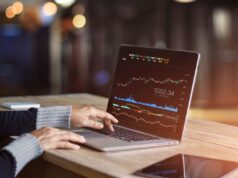The world of trading has come a long way since the days of the stockbrokers shouting out orders on the floor of the exchange. With the advent of technology and the internet, trading has become more accessible to people around the world, and it’s never been easier to enter the market.
However, as the popularity of trading has grown, so has the competition. This means that traders need to have a solid understanding of the markets, as well as a range of effective strategies and techniques to succeed.
While trading can be a lucrative activity, it’s not without its challenges. The market can be volatile and unpredictable, and even the most skilled traders can experience losses. However, by developing a sound trading plan and using proven strategies and techniques, traders can increase their chances of success.
Whether you’re a seasoned pro or just starting out, this article will provide you with the knowledge and insights you need to succeed in the dynamic and exciting world of trading in 2025.
Developing a Trading Plan
Before you start trading, it’s essential to develop a trading plan. This plan should outline your goals, the assets you want to trade, and your risk management strategy. Having a well-defined plan in place can help you make informed trading decisions and minimize the risk of losses.
When developing your trading plan, you should consider the following:
- Your trading goals: What do you want to achieve through trading? Are you looking to generate a full-time income or supplement your existing income? Defining your trading goals can help you determine the appropriate trading style and risk management strategy.
- The assets you want to trade: What assets do you want to trade? Are you interested in trading stocks, currencies, commodities, or cryptocurrencies? Each asset class has its unique characteristics and requires different strategies.
- Your risk management strategy: How will you manage your risk when trading? What is your risk tolerance? Defining your risk management strategy can help you protect your trading capital and avoid significant losses.
Using Technical Analysis
Technical analysis involves analyzing charts and market data to identify trends and patterns. By using technical analysis, traders can gain insight into market movements and make more accurate predictions about future price movements. This can help traders identify potential trading opportunities and make informed decisions.
Some of the technical indicators that traders use in technical analysis include:
- Moving Averages: Moving averages are used to identify the trend direction and potential support and resistance levels.
- Relative Strength Index (RSI): The RSI is a momentum indicator that helps traders identify overbought and oversold conditions.
- Bollinger Bands: Bollinger Bands are used to identify the potential range of price movements and potential support and resistance levels.
Practicing Risk Management

Trading involves risk, and it’s important to have a risk management strategy in place to minimize your losses. This includes setting stop-loss orders, using leverage wisely, and diversifying your portfolio. By managing your risk effectively, you can protect your trading capital and increase your chances of success.
When practicing risk management, you should consider the following:
- Setting Stop-Loss Orders: Stop-loss orders are used to close a trade automatically when the price reaches a predetermined level. This can help you limit your losses and avoid significant drawdowns.
- Using Leverage Wisely: Leverage can amplify your gains, but it can also increase your losses. It’s essential to use leverage wisely and not overexpose yourself to significant losses.
- Diversifying Your Portfolio: Diversification involves spreading your risk across different asset classes and instruments. This can help you reduce your exposure to any single asset and mitigate your overall risk.
Choosing a Reliable Trading Platform
When it comes to trading, selecting the right platform is essential. A reputable trading platform like Binomo.com.ua offers a range of features and tools to help traders succeed. With its user-friendly interface, educational resources, and responsive customer support, a reliable platform is an excellent choice for traders of all levels.
Some of the features that a reliable trading platform offers may include:
- Demo Account: A demo account allows traders to practice trading strategies without risking real money.
- Educational Resources: A variety of educational resources, such as video tutorials, webinars, and trading guides, can help traders improve their knowledge and skills.
- Technical Indicators: A wide range of technical indicators, including Moving Averages, Bollinger Bands, and Relative Strength Index (RSI), can help traders analyze the markets and identify potential trading opportunities.
- Mobile Trading: A mobile trading app can allow traders to trade on the go, ensuring that they never miss a trading opportunity.
- Security: A regulated broker that uses SSL encryption can protect traders’ personal and financial information, giving traders the confidence that their data is secure when trading on the platform.
Conclusion

In conclusion, trading can be a highly lucrative activity for those who have the necessary skills, knowledge, and discipline to succeed.
However, trading is also a highly competitive and risky business that demands traders to constantly adapt and evolve to market conditions. To be a successful trader, one needs to have a clear understanding of the market, stay updated on economic news and global events, and develop sound trading strategies.
Successful trading requires traders to develop a trading plan, use technical analysis, practice risk management, and choose a reliable trading platform. With the right mindset, knowledge, and tools, traders can increase their chances of success and achieve their financial goals in 2025.









